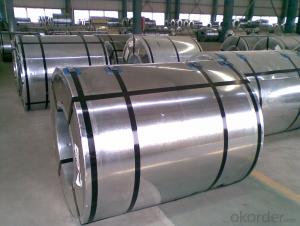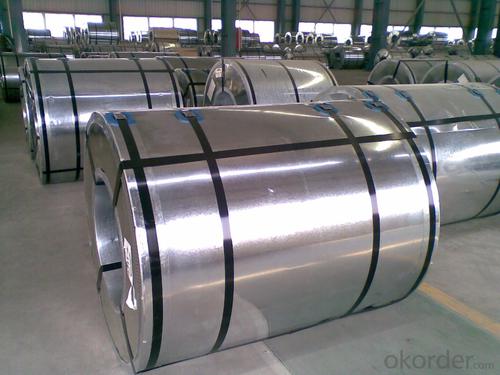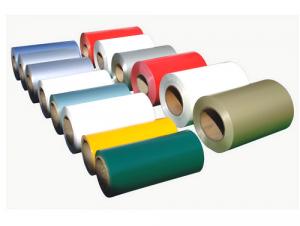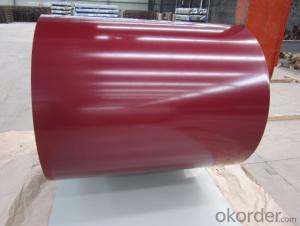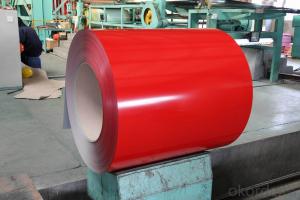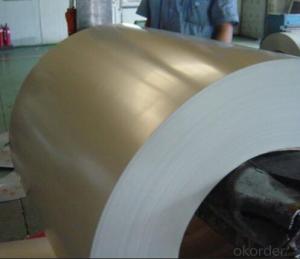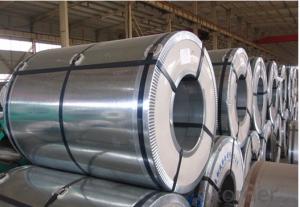Pre-painted Galvanized Steel Coils-RAL9011-0.43mm*1200mm
- Loading Port:
- Tianjin
- Payment Terms:
- TT OR LC
- Min Order Qty:
- 50 m.t.
- Supply Capability:
- 5000 m.t./month
OKorder Service Pledge
OKorder Financial Service
You Might Also Like
I Specifications:
1.Thickness:0.16-2.0mm
2.Width:600-1500mm
3.Material: SGCC,SGCD,SECC,SECD,DX51D+Z
4.Zinc coating:40-275G/M2
5.Surface Structure: galvanized ,zero spangle, regular spangle or normal spangle
6.Surface treatment: chromated and oiled, chromated and non-oiled
7.Color:all RAL series
II Main characteristics :
1.strong corrosion resistance
2.surface quality
3.conducive to deep processing,such as the embossed PPGI,printed PPGI&punching PPGI
4.economy and practicality
III Applications:
Household Appliance:
1.Refrigerator shutter &side panels, Washer, Freezers, Air conditions,
2.Rice Cooker, Microwave Ovens, Water Heaters, Sterilization Cabinets, Range Hoods
3.Computer Panels , DVD/DVB panels, TV back panel etc.
Teaching Board: whiteboard, blackboard, green board(chalk board).
Indoor Decoration: Fireproof Door, kitchen cabinet, wall decoration.
Shipping Industries: Ship, Fecht, Marine.
Elevator/Medical Equipment/Rubbish Bin.
- Q: What are they worth today? As well as a 1943 steel nickel?
- The 1943 zinc coated steel cent is very common in circulated grades. They were saved by a lot of people because they are a one year type coin. I can buy them for .02 to .10 each depending on grade. Uncirculated ones are worth more, a few dollars. There is no such thing as a 1943 steel nickel. The nickel that year were made of 56% copper,35% silver and 9% manganese. The 1943 nickel sells for around a $1 in very fine to $2 in extra fine. It is worth more in high grade mint state.
- Q: How are steel coils used in the production of steel fasteners?
- Steel coils are used in the production of steel fasteners by being processed into flat strips or wires, which are then cut, shaped, and threaded to create various types of fasteners such as screws, bolts, and nuts. The coils provide a continuous supply of steel material that is easily manipulable and can be efficiently transformed into the desired shape and size for fastener production.
- Q: I looking at replacing a few of the panels on my car with either Carbon Fiber or High Tensile Steel to shave off some weight and increase mpg and take some time off my quarter mile. Which is better: Carbon Fiber or High Tensile Steel?
- Steel is much cheaper to buy, but weighs more than the carbon fiber and is not as strong as a rule. To save weight on a race car go with carbon fiber. To save weight (money) on the wallet go with steel.
- Q: Steel sticks- it has meaning to us -similar to my deceased father's name, Steven fits our style as people. We like the hardness of it for our little man. We need a middle name though. Open to suggestions, thank you=)
- Steel Remington Tompkins Steel Ryder Tompkins Steel Sargent Tompkins Steel Thor Tompkins
- Q: I am making a sword of 1060 carbon steel and would like to know how to heat treat it once it's ready, could anyone help please?
- I've okorder for back and forth communication. I could type up some lengthy post, you'd read it and be like I don't have that piece of gear and all my time is wasted.
- Q: steel structure
- Disadvantages Of Steel
- Q: Does anyone know if there is any info on Steel Manufacturing techniques, utilyzing electro/mechanical methods in order to create carbon nanotubes from the %C already inherant in the steel. In other words just modifying the Geometry of the Carbon the already makes up some of the steel.
- I don't think that would work. First off, there's not enough carbon in steel - even very high carbon steels are only about 2% carbon. Second, the iron atoms in steel form a crystal lattice, in the shape of a cube, with another iron atom in the middle of the cube. Each cube is about 0.3 nm per side. Carbon atoms work their way into the crystals and displace the iron atoms. But a carbon nanotube is around 1 nanometer in diameter - that's 3 times as big as the iron lattice! So a nanotube wouldn't fit. One thing you might do, however, is make a composite - mix the materials together on a scale a little bigger than the atomic scale that the iron and carbon mix to make steel. Just like a carbon fiber bicycle frame or ski pole is strands of carbon (much bigger and not as strong as nanotubes) held together with epoxy, you could hold nanotube strands together with metal. Not sure it would be good for armor, but if you can figure out a way to do it, I'm sure someone will come up with a use for it!
- Q: So...that means Wolverine can stab him, right? Because Adamantite is stronger than steel. Correct?
- Faster than a Speeding bullet too!! They are just expressions/nicknames. Obviously he's faster than a speeding bullet, he can run from Kansas to Mexico and back and you wouldn't even know it. If you want it literally, just call him Superman, or extremely tough and fast man.
- Q: Is this a strong, durable piece of steel that can take abuse? I'm thinking about using it on a small project.
- If you made up the right rigging you could probably suspend a Volkswagon with that, but certainly a refrigerator. It's flexible as steel goes - it's not rigid like tool steel, for instance. Since you ask about tempering and you are shopping at Home Depot, it should be just fine for a home project, if it looks like it will suit. Building a bridge or a machine tool, no.
- Q: Are steel coils used in appliances manufacturing?
- Yes, steel coils are commonly used in the manufacturing of appliances. They serve as a key component in various appliances such as refrigerators, washing machines, and dryers, providing structural strength and stability to the overall product.
Send your message to us
Pre-painted Galvanized Steel Coils-RAL9011-0.43mm*1200mm
- Loading Port:
- Tianjin
- Payment Terms:
- TT OR LC
- Min Order Qty:
- 50 m.t.
- Supply Capability:
- 5000 m.t./month
OKorder Service Pledge
OKorder Financial Service
Similar products
Hot products
Hot Searches
Related keywords
